This article was originally published in the Proceedings of the Soils and Crops Workshop, 2005.
Authors
Tom Wolf (AAFC), Brian Caldwell (AAFC), Cheryl Cho (CDC), Sabine Banniza (CDC), Yantai Gan (AAFC)
Background:
Fungicide application is an important disease management strategy for ascochyta blight (caused by Ascochyta rabiei) in chickpea due to the poor host resistance in available cultivars. Ascochyta blight, left untreated, can cause yield losses in excess of 90% in Saskatchewan, and appropriate timing and frequency of fungicide spray application is critical. Producers wishing to apply fungicide are sometimes unsure which application method to use – aerial or ground. Both offer potential advantages and disadvantages: ground sprayers utilize greater water volumes, but leave tracks which can lower yield and spread disease. Aircraft use lower water volumes but do not damage the crop and can cover more area in a timely fashion. The relative importance of these characteristics is unknown.
Objectives:
Objectives of this study were to compare aerial and ground fungicide application on chickpea disease and seed yield.
Materials and Methods:
Chickpeas (certified CDC Xena, a unifoliate kabuli rated as having very poor ascochyta resistance) were seeded on May 15 (2003) and May 27 (2004) on 35-acre sites near Saskatoon which had been chem-fallow wheat stubble (2003) and spring wheat (2004) the previous year. Seed was treated with Crown and Apron and seeded at 170 lbs/acre (35 seeds/m2) to a depth of 6.5 cm using a Flexi-Coil airseeder with 9” row spacing. The field was harrowed and rolled after seeding. Pursuit (70 mL/ha) and Post Ultra (0.32 L/ha) were applied for weed control in both years. The crop established evenly and weed populations (primarily prostrate pigweed and stinkweed) were low in 2003. In 2004, sow thistle was the predominant weed.
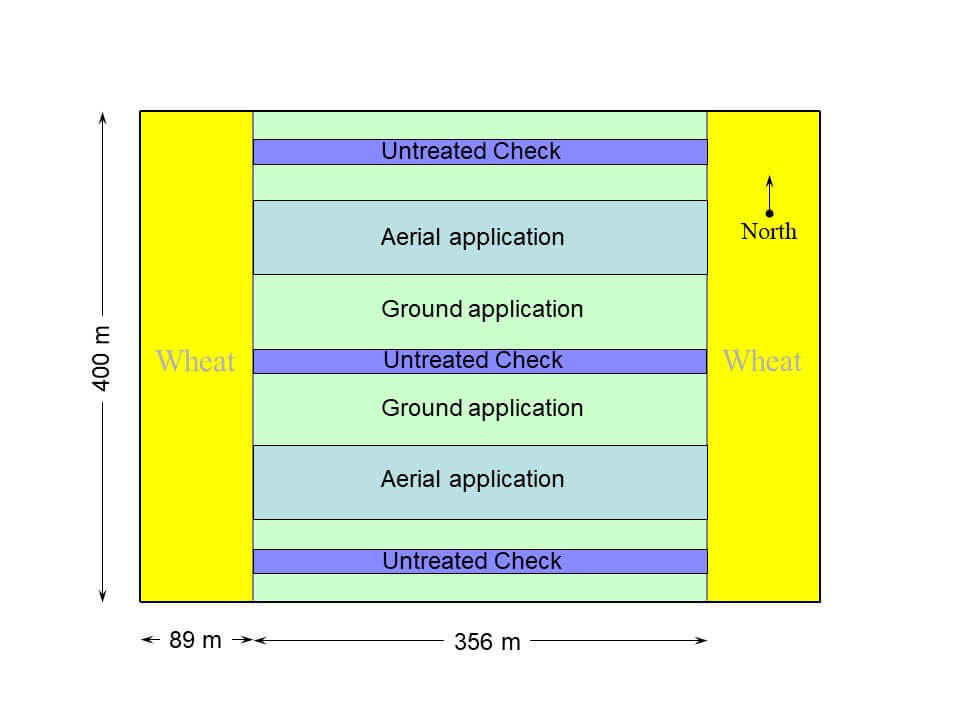
In 2003, the crop was scouted at 5-day intervals for the presence of disease. Initial disease levels through June were very low and disease did not become visible until after the first major rainfall event on July 6. Headline (pyraclostrobin) was applied on July 11 and 21 at 0.4 L/ha, followed by Lance (boscalid) on August 1 and 13-14 at 0.42 kg/ha. Aerial and ground applications were conducted at dusk with calm conditions. Both were conducted within 1 h of each other except for the last application of Lance where the ground application followed the next morning.
In 2004, the crop was slow to establish, but disease became prevalent early in its development, especially on the side of the field which bordered the 2003 trials. Headline was applied on July 12 and July 23, Lance was applied on August 2. A second application of Lance was not warranted due to cool conditions which jeopardized the maturity of the crop.
In both years, aerial applications were done by Cessna Ag Truck applying 4 US gpa (37 L/ha) through 24 CP-03 nozzles with the 0.125 flow orifice and 90º deflection, at a pressure of 34 psi and 120 mph airspeed. At these settings, the spray had a volume median diameter (VMD) of 271 µm according to USDA atomization models. Swath width was 50’ and boom height was 10 to 15’ above ground.
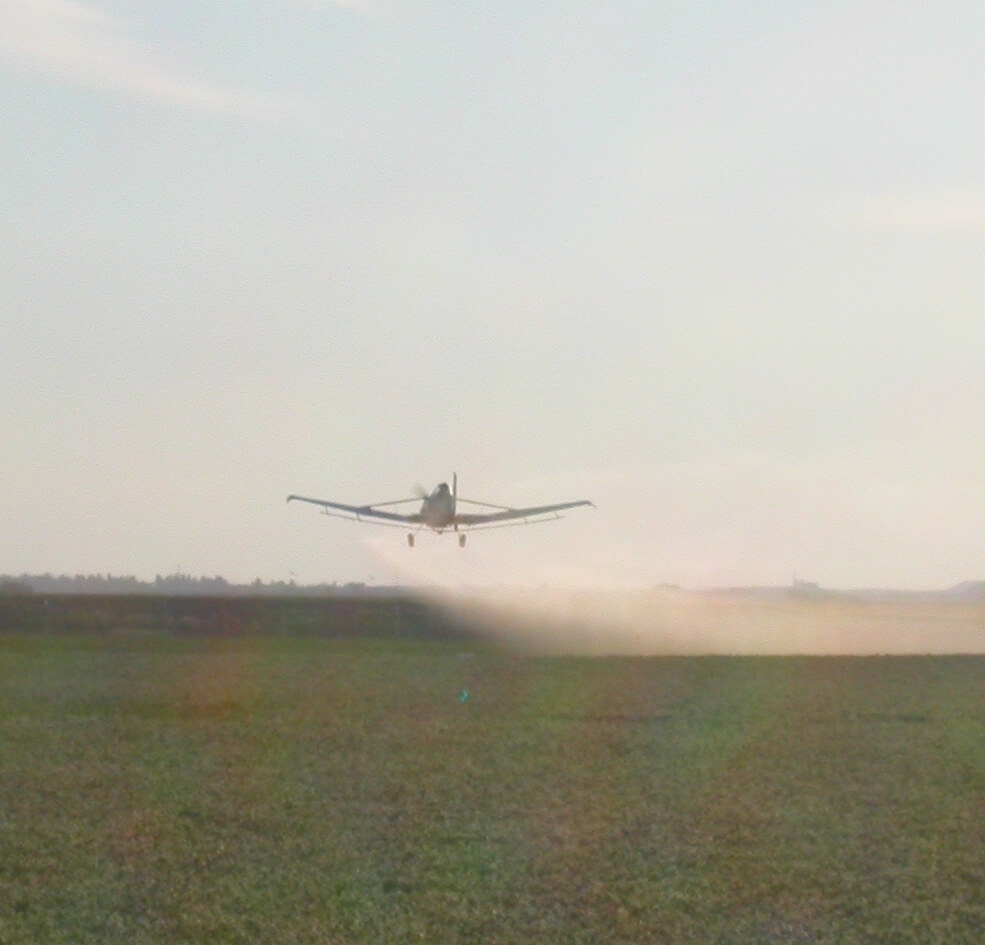
Ground applications were done using a Melroe SpraCoupe 220 travelling 8 mph with a 43’ boom, using XR8003 nozzles operated at 40 psi and a boom height of about 75 cm. At these settings, the application volume was 100 L/ha, and the spray had a VMD of 246 µm.
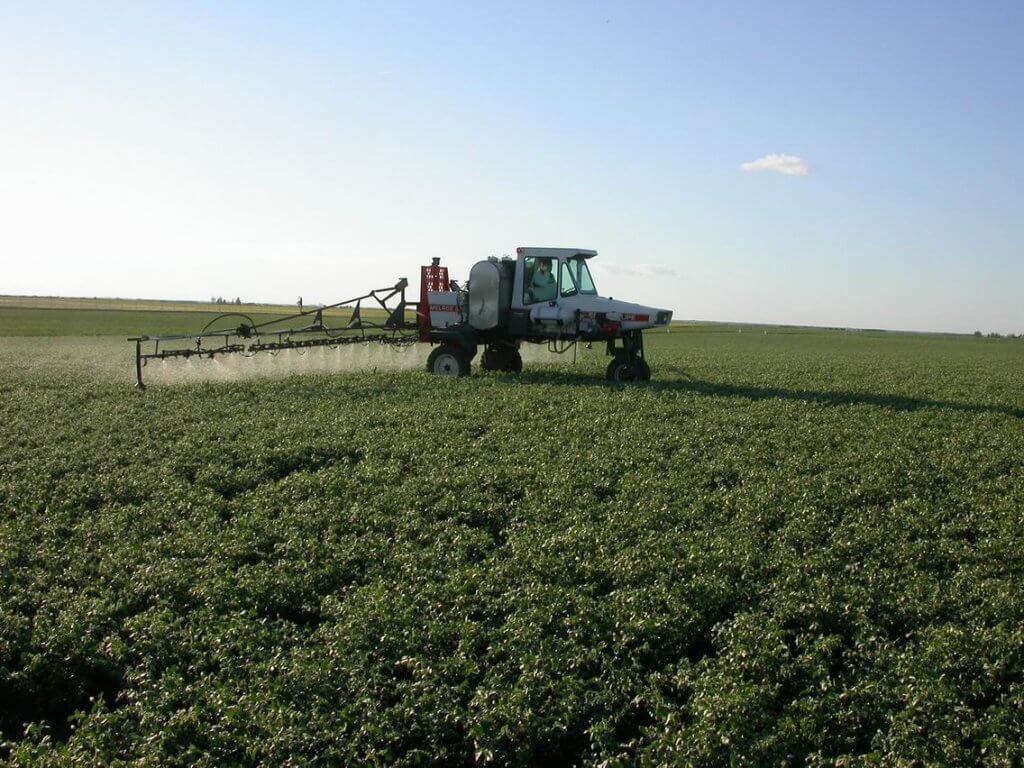
Disease ratings were conducted on approximately the same dates as spraying. Disease ratings were conducting using the 0-11 Horsfall-Barratt scale, converted to % infection. Single plants were rated at 64 (2003) and 60 (2004) locations in each treatment within each rep, for a total number of 128 or 120 plants rated per treatment per rating date (except for the first rating, where only 24 plants per treatment were rated). Ratings from the outside two passes of the aircraft in each replicate were deleted since proper spray patterns were not expected at these edges.
In 2003, the crop matured in mid-August and Reglone was applied by ground sprayer travelling perpendicular to the treatments, on August 22. In 2004, the crop failed to mature and was sprayed with Roundup on September 20.
The 2003 crop was harvested on September 3 using a Case 1688 combine with a 30’ flex header. After removal of headlands, two 275 m long swaths were taken from each treatment, and the seed from each swath was weighed and sub-sampled for seed quality. In the aerial plots, the central two spray swaths of each rep were sampled. In the ground plots, two swaths were taken with wheel tracks, and two without wheel tracks in each rep. Wheel tracks were then adjusted to a 90’ boom width for yield calculations.
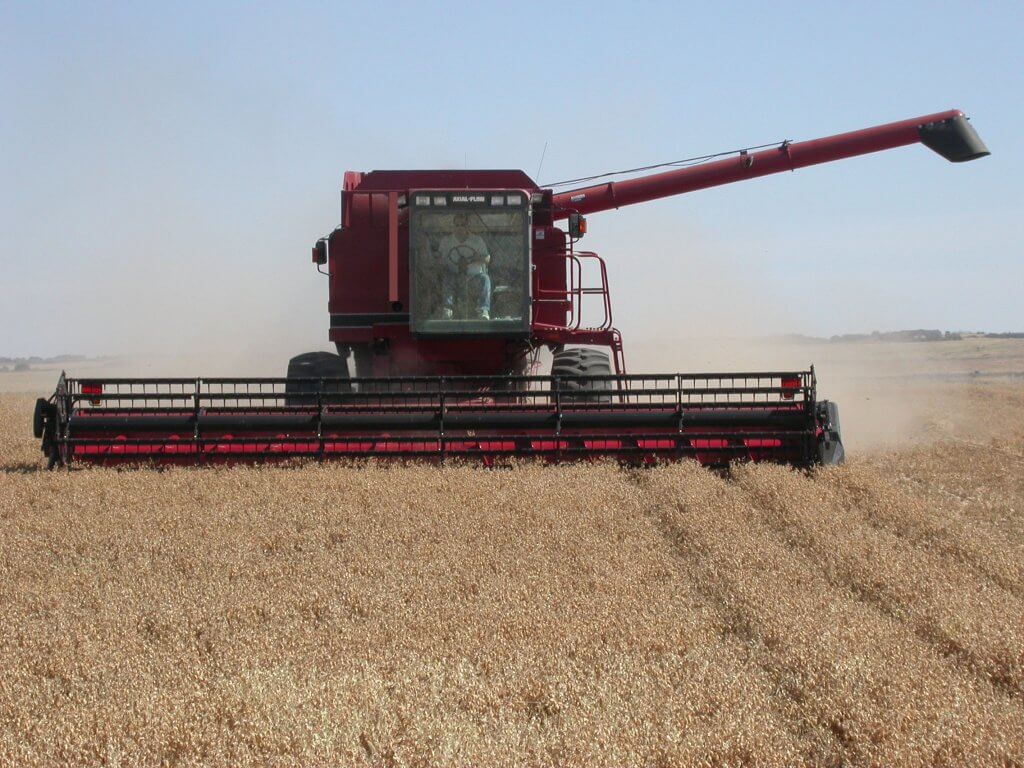
In 2004, harvest was impractical with the large combine due to the low seed yield and quality which prevented accurate yield measurements. On November 10, a Hege combine was used to harvest a single pass along the length of each sprayer swath for all treatments. The grain was bagged, dried , and weighed.
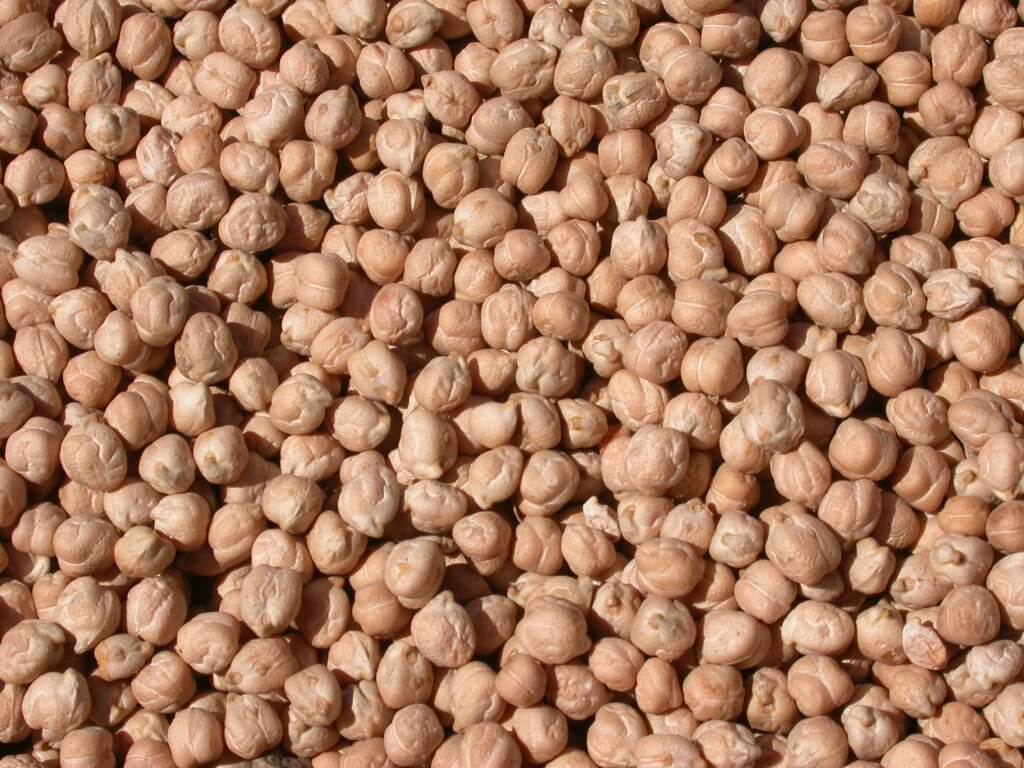
All data were analyzed using analysis of variance (ANOVA) as a randomized complete block design with two replicates. Treatment effects were considered significant at p=0.05.
Results and Discussion:
Ascochyta was prevalent in both 2003 and 2004. In 2003, disease severity in the untreated chickpea progressed from about 5% to about 66% from July 9 to July 31. Disease severity in sprayed plots was significantly less, about 18 and 21% for the ground and aerial treatments, respectively on July 31. A late flush of disease on new growth increased levels to 87% in the untreated plots, and 28 to 41% in the ground and aerial plots, respectively, on August 14.
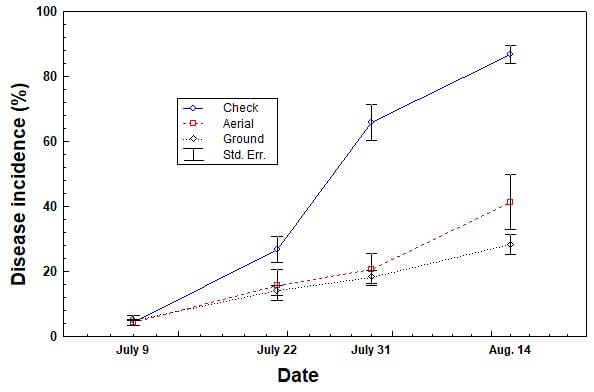
In 2004, disease in the untreated plots steadily increased from 3% infection on July 14 to 99% on Sept 14. During this time, the treated aerial and ground plots increased from 4 to 18-20%, similar for both application methods.
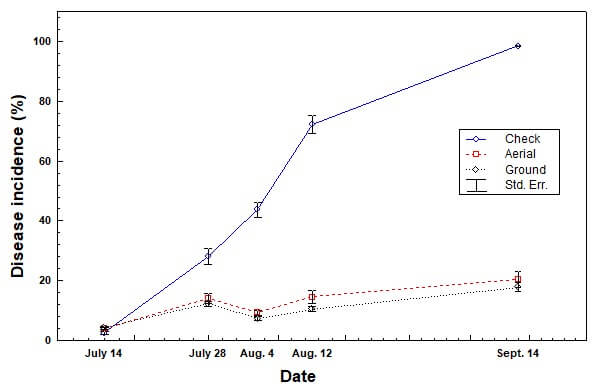
Application methods generated visually different spray deposits on water sensitive cards. The ground application had greater overall coverage of the cards primarily due to the greater water volume used (100 L/ha vs. 37 L/ha) Cards indicated that overall uniformity of the spray deposit along the width of the boom was greater for the ground sprayer (data not shown). However, water sensitive cards provide an artificial collection surface that does not accurately simulate the complexity of a leaf surface or a multi-dimensional plant canopy. These cards therefore do not provide an assessment of leaf coverage, but are limited to a visual indication of the type of spray quality emitted by the application.
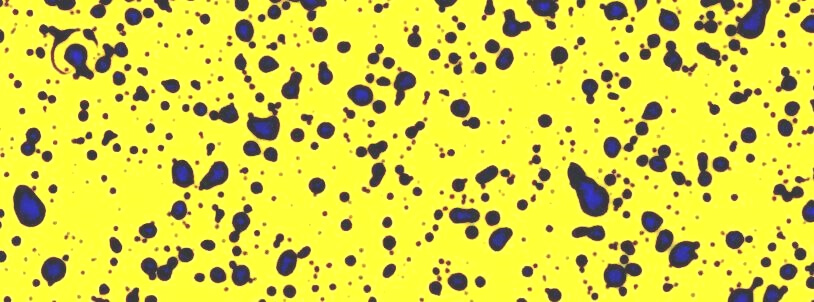
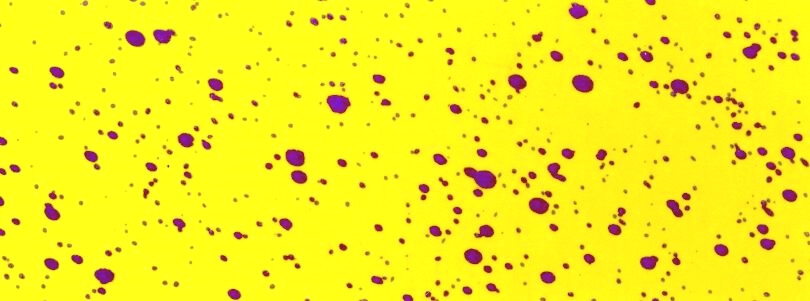
Fungicide application significantly increased seed yield in both years. In 2003, yield averaged 13 bu/acre for the unsprayed treatments, and 33 bu/acre where fungicide had been applied. Aerial treatments yielded 32.7 bu/acre, whereas ground treatments (track damage adjusted for 90’ boom width) yielded 34.4 bu/acre. This difference was not statistically significant (Table 1). Ground-sprayed areas without wheel tracks yielded 36.0 bu/acre, therefore yield loss due to tracks was 1.6 bu/acre.
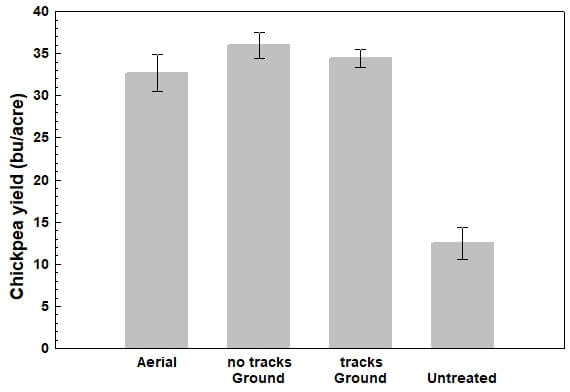
Table 1: Analysis of Variance (ANOVA) for chickpea seed yield from aerial and ground applications (ground with tracks adjusted for 90′ boom), 2003
| Effect | df Effect | MS Effect | df Error | MS Error | F-value | p-level |
| Trt | 1 | 5.89 | 1 | 1.41 | 4.18 | 0.290 |
| Rep | 1 | 12.10 | 1 | 1.41 | 8.58 | 0.209 |
Sprayer tracks reduced yield due to crop destruction, but they did not appear to spread disease within the crop. It is possible that application during evening hours before dew wetted the foliage helped prevent disease spread. The role of sprayer tracks requires further investigation.
Seed yield and quality were very poor in 2004 due to cool growing conditions and an early frost. In spite of this, results mirrored those from 2003: fungicide significantly increased yield, from 0.3 bu/acre in the untreated plots to 4.7 and 4.9 bu/acre in the ground and aerial treatments, respectively. Yield differences arising from application method were not statistically significant.
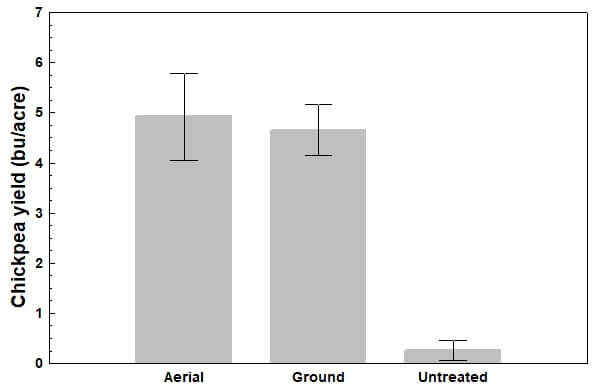
Seed quality analysis demonstrated no difference in chickpea grade of either ground or aerially applied fungicide. Aschochyta rabiei was not detected on seed from any treatment.
These results showed that both ground and aerial application of fungicide provided effective control of Ascochyta rabiei on chickpeas. Results from 2004 were compromised by a poor growing season, therefore further work may be necessary to confirm this outcome. Nonetheless, the consitency of conclusions support recommending both methods to producers wishing to apply fungicide.
Acknowledgements:
We thank Roland Jenson (Cloud 9 Airspray) for conducting the aerial applications, Mark Kuchuran and Dan Caldwell (BASF) for providing fungicide, herbicide, and overall support, Jim Kelley (Redhead Equipment) for providing harvesting equipment, Al Baraniuk (AAFC) for assisting with seeding and harvesting operations, and Curtis Sieben and Chris Gilchrist for implementing this trial. Financial assistance was provided by the Saskatchewan Pulse Growers (2003) and AAFC through the IFSP Initiative (2004).